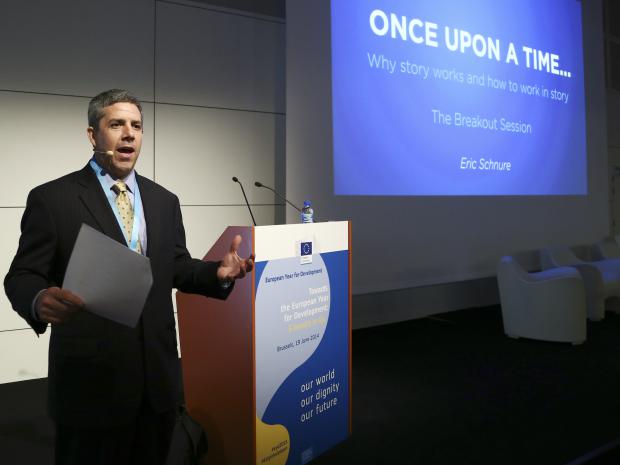How to capture attention with story telling?
Discussion
Information
501
Views
0
0
Comments
Discussion details
Created
03 July 2014
WORKSHOP ON STORYTELLING ON JUNE 19TH
|
Image

Former White House speech writer Eric Schnure explains the power of story telling
WORKSHOP CONCLUSIONS
- A good story has a protagonist, a challenge and the process of overcoming it. It contains minor details that allow people to visualise and connect with it. It is communicated in such a way that people can relate to it emotionally. A case study will tell you what happened and when, a story will tell you who, what, when, why, how, emotional reactions, human elements, etc.
- The importance of identifying the audience and then adapting the content, the channel and the format accordingly was discussed. Traditional media continue to be a key target for the EYD, as well as social media and audiovisual methods online.
- Another recommendation was about content and clarity. Avoiding jargon, being concise and explaining them in a way that makes them accessible to the public is key to creating a "brand" newsroom for the EYD. When including data try to use infographs or visual information as much as possible. Otherwise try to relate to personal experience and adding a human factor so people can relate to the story.
- It was stressed that there is a need to make the case for development in such difficult times economically. It was advised that that the EU should not shy away in explaining why we invest in developing countries. Arguments for this case included that we live in an interconnected world, that the EU cannot develop in peace when there is conflict abroad so it's a matter of common interest, as well as that it is matter of solidarity which is one fundamental value of the EU – if we wish something for ourselves, why shouldn’t we want to help others attain the same rights?
- It was recommended that measurement depends heavily on the objectives of the campaign. The definition of clear goals from which indicators can be derived is integral to the process. This is important to provide a baseline against which the campaign can be assessed.
- There are tangible measures for story impacts. These include social media shares, page views, comments, publications sold, etc. These are easily measured but are not indicative of the success of the campaign. For example, a high number of shares on social media due to a negative reaction to the story might produce negative results in the long run.
- There are also measures that are more difficult to attain. These include how people feel about the story and how much it resonates with the public. Possible ways of measuring these impacts include increase of engagement of the public (through discussion, volunteerism, voting patterns, surveys like the Eurobarometer, etc), the development of the discussion (if new ideas are brought to the table following the campaign), etc.
- One needs to be careful with storytelling to always have respect for your subject and not abuse them. For example, casting someone as a character without agency, at the mercy of the world is disrespectful. It may secure donations in the short term but will be damaging to the goals of a real partnership in development in the longer term.
Log in with your EU Login account to post or comment on the platform.